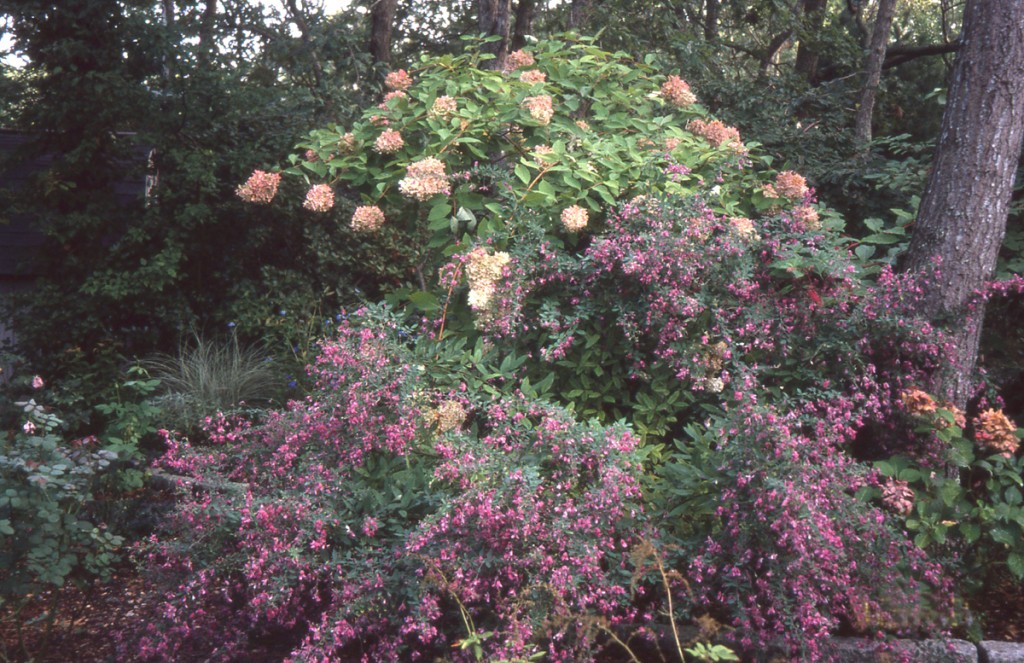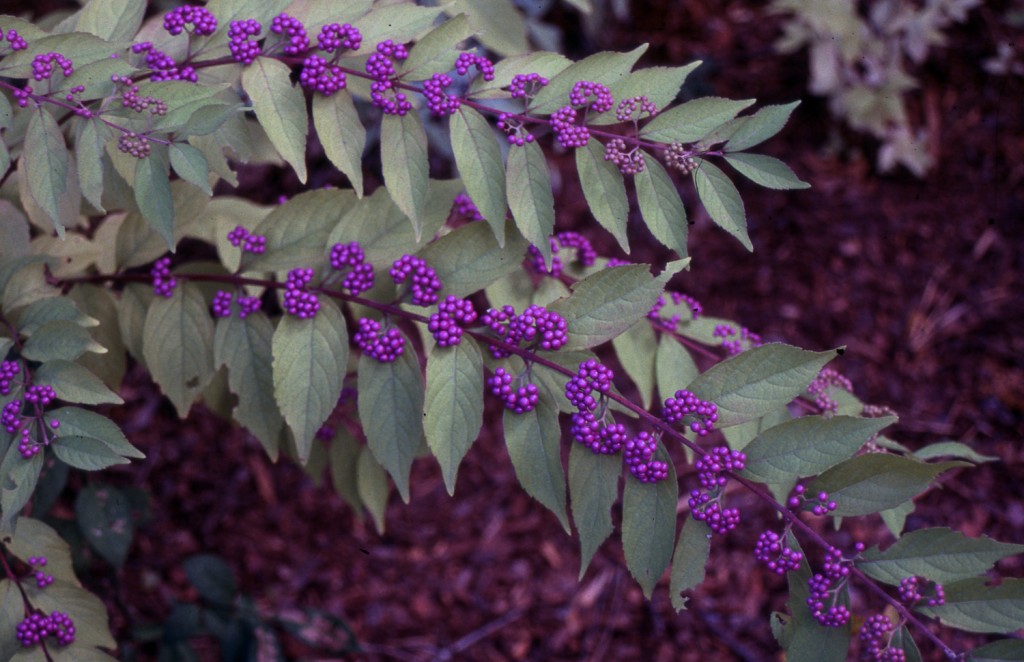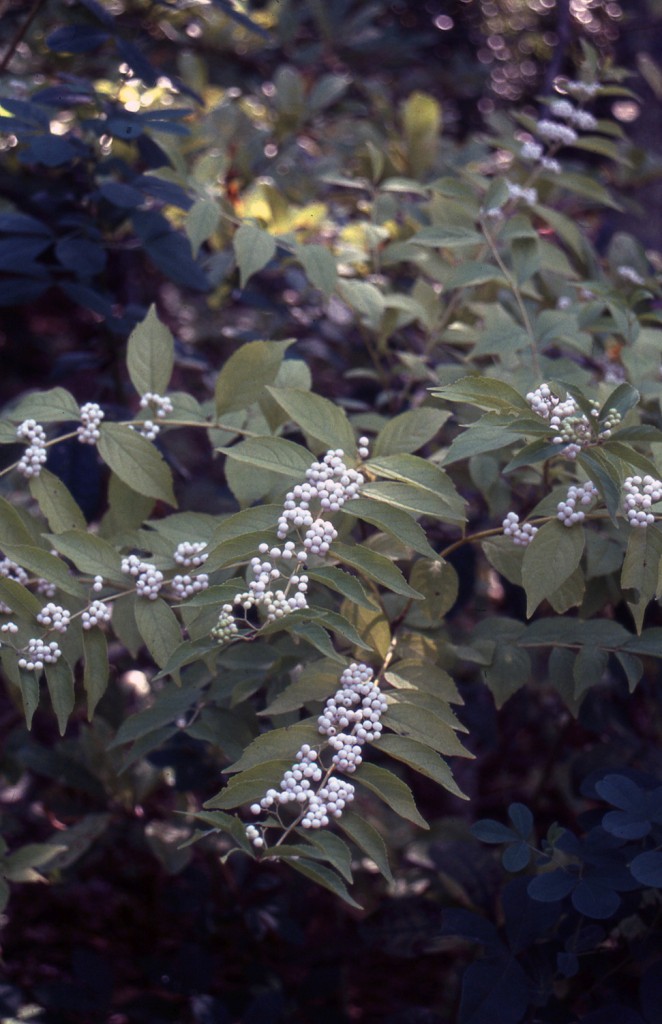About twenty years ago, on a brisk Fall day, I visited a beautiful lower-Manhattan community garden. There I saw Lespedeza thunbergii ‘Gibraltar’ for the first time and was instantly smitten. It has graced my garden, on and off, ever since. I say on and off because the voles are equally smitten. ( See Archives, April 2012, “Hot Tips: Vole Damage Prevention”).
While styled a woody shrub, in my zone 7 garden it behaves like a herbaceous perennial, dying back in Winter and returning in Spring. Not a problem, since an established plant can grow a formidable six feet high and six feet wide in one growing season.
In Spring and Summer the shrub is clothed in lovely blue-green foliage. Then in the early Fall, the long, slender stems are smothered in magenta pea-like flowers, creating an enchanting fountain of resplendent blossoms. Breathtaking! I’ve paired Gibraltar with a standard form of PeeGee Hydrangea (H. paniculata ‘Grandiflora’) whose snowy white flowers turn pink about the same time. As you can see from the photo it was love at first sight, with Lespedeza reaching up to embrace PeeGee before cascading down.
- copyright 2012 – Lois Sheinfeld
I’m mad about magenta. But if it isn’t your thing, I also have and recommend an equally impressive white-flowering form of Lespedeza, L.t.’White Fountain’. As a bonus, this cultivar sports lovely golden foliage in late autumn. An ideal partner for Callicarpa dichotoma, which turns autumnal gold at the same time.
Splendid Fall foliage is but one virtue of Callicarpa dichotoma. Aptly named Purple Beautyberry, this ornamental shrub is acclaimed for it’s spectacular Autumn display of purple berries. Though again, if purple doesn’t move you or if it’s too much of a wow, try the more refined, yet elegant, white-berried form, C.d. var. albifructus. I have and like both.
In my garden, Lespedeza and Callicarpa flourish in shade and well drained acid soil. Apart from the aforementioned voles, which regard both as menu favorites, the plants have been trouble free.
More Autumn beauties next time.


